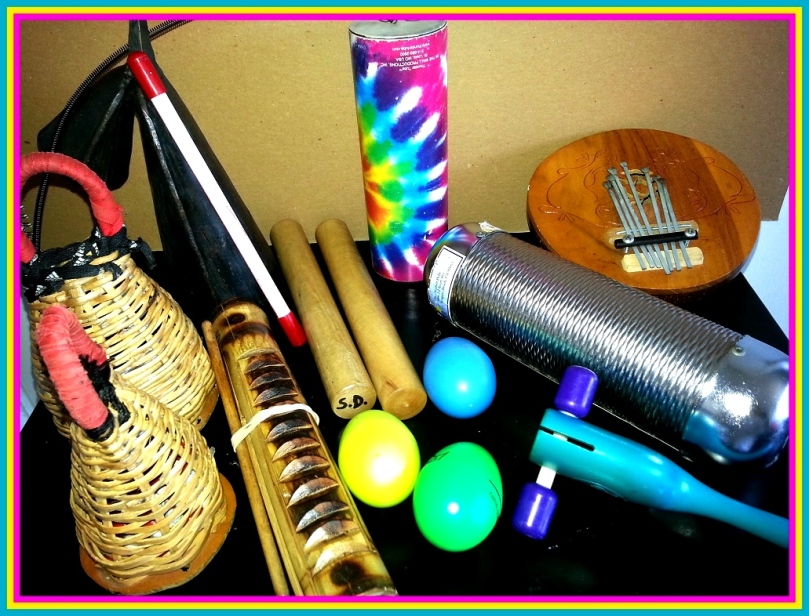
As many of you might expect, I almost always have percussion instruments with me, even while on vacation. When I traveled to Northern Michigan in 2012, I brought the above claves, shaker eggs, a cylinder shaker, woodpecker, gongo bell, flute, and thunder tube. I travel with these should I be asked to entertain or do a drumming therapy session. This request came from a friend of the family for an 11-yr old girl with cerebral palsy and autism from a chromosomal defect. The child was quite challenged and could not walk or talk, and suffered from restlessness and difficulty sleeping.
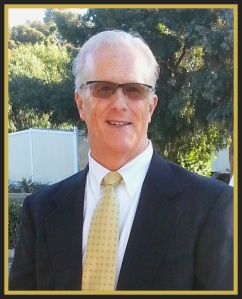
The Patient Workup
In preparing for my sessions, I perform a brief patient workup that consist of speaking to the parent in the presence of the child – to get the relevant patient history and to let each see me speaking in the presence of the other – which establishes permission. I am experienced in doing clinical workups from my prior nuclear medicine work and current hydrocephalus consults and drumming work. All together, I have 17 years of clinical workup experience as a nuclear medicine technologist (10 years with my company Certified Nuclear Imaging), 15-20 years hydrocephalus and medical device consulting, more than 10 years in drumming, and 10+ years earlier experience coaching youth soccer and baseball where some of my kids had speacial needs
Next, I introduced myself and spoke directly to Eliza, the eleven year old child in this session. I wanted to assess her present state of mind and willingness to work with me- which was positive. I assess the eyes, body movements, and listen to any verbal responses to any nervousness or physical complaints that might interfere with the session. It is important to know any issues that might limit the session – so I can ideally adjust ahead of this. I shared with her mother that I would keep the instrument play simple and not too loud, and start simple and increase stimulation and complexity as long as she was agreeable and engaging. As the therapist, I must continually observe her engagement and adjust my interactions accordingly.
Sensory Processing Disorder
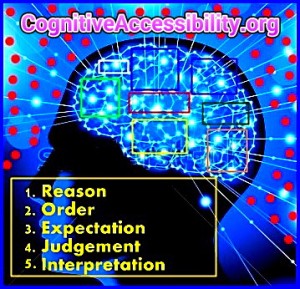
Most all children with autism also suffer from sensory processing disorder (SPD), as do many with hydrocephalus, ADHD, PTSD, Parkinson’s, post TBI and the like. IN SPD, the individual will become easily over sensatized to sound, light, motion, or scents. Sound is the most common, but lights and colors are often an issue too. The list of accommodations for individuals with SPD as a medical challenge vary, but now fall under “cognitive accessibility,” which medically and legally defines the neurologic functional needs of the individual. I have become increasingly involved in cognitive accessibility over the last 5 years.
As I sat down next to Eliza, I observed her to be drooling, a bit anxious but also curious about what I was about to do. She was cooperative. My approach is to be calm and assuring. In these sessions where sensory processing disorder is present, sound, color, my voice, and movements become a critical part of the music therapy session. I maintain my attentiveness to her responses.
Color, Movement, and Music

I began by playing a simple 1-2 beat on my wooden claves, and it immediately drew her attention. I followed this up with one shaker egg, and then two, and she responded with giggles and excitement the more I played. With the colored egg shakers, it was hard to differentiate how much of her response was due to the egg color and motion versus sound from the eggs. Then I played the cylinder shaker, which can be loud if not careful, and I got more positive response from her. Next, I played the woodpecker and shaker together, and she went bananas! Yes everyone likes the wood pecker. By this time, she had been awaiting and anticipating my every movement and instrument sound. It was as much fun for me as it was for her. She became a terrific student and fan!
Then I played the Remo thunder tube. And she became so excited, she reached out and grabed it. Her mother said she couldn’t hold things in her hands. But she pinned the thunder tube between her right hand and lap, and resisted a bit as I reached to take it and play again. However, at no time did she play any of the instruments. I tried to get her to hold a shaker egg, but without success. Eventually she held the thunder tube almost entirely in her hand. My session lasted almost 40 minutes, and I was very pleased at her attentiveness, willingness to engage me, and willingness to challenge her own limitations.
Music and the Brain
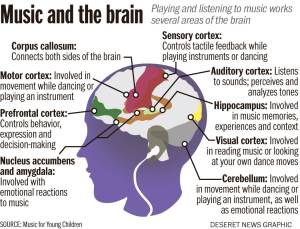
I believe the favorable response and attentiveness during this treatment was due to the child’s attentiveness to engage me and the sounds and colors of the instruments. By the end of the session, she had remarkable focus and level of excitement, and briefly drank from a bottle. And then stood up by holding onto the porch railing, and stretched in excitement. I explained to her mother that these type of therapies might be helpful in her walking or talking someday. The family has a piano where she and the other kids will gather around and play together. I’m told she likes the bass notes on the piano. So I suspected she’d love the sound of a bass drum (I did not have on this trip). I would be curious as to what an EEG would show of her brain waves since she craved active sounds. She’d also been to a Blue Man show where the performers made her part of the show.
Music & Drumming Therapy as Healing Arts
EMDR therapy is one related sound and movement therapy that comes to mind and is used in PTSD and sensory processing disorders to desensative the individual. I reflected on new EMDR methods in 2002 when I undertook my sound sensory study with the Boss metronome (discussed further below). As EMDR is also a “healing art,” I’ve shared my blog below on CAM and alternative medicine. It is from 2012. But it’s been updated. It is the first third or so of this blog, where I discuss my past mind-body methods, that I think is relevant to music and drumming therapy today. In these regards, I believe the benefits come from more than sound and interaction, they come from the authencity and “intent” of the therapists. And this is widely true thoughout the various alternative medicine modalities. There must be a BUY IN by the patient! The trust and optimism causes a release of neurochemicals in the brain and change in cell structure throughtout the body.
Healing thru Complimentary and Alternative Medicine

Drumming for the Brain & its Effect on Brain Wave States
In EMDR Therapy, the therapists determines what to say and how to integrate sound and visual cues. It has been discovered via Parkinson’s Disease work that happy and relaxing activities please the brain and aid in the release of endorphins, particularly dopamine. Dopamine levels often run low in PD. I am uncertain as to the effect seen in cerebral palsy and autism. But I observed in my session with this child that she had a strong affinity for rapid stimulation thru musical toys, also confirmed by her mother.

I am unsure whether Eliza’s low functioning state kept her brain waves in a lowered state, i.e. alpha. But she craved rapid stimulation. I felt it critical that I engage her in a step-by-step method of rhythmic movements and sound so as not to overstimulate her, and maintain her focus and level of engagement. Most of what I played were slower rhythms. The most up tempo I played was a moderate samba on the bell and clave. And this was only one session. I didn’t have opportunity to stimulate her on multiple levels. And at the end of this single session, I could see she was tired.
I suspect a djembe drum or bass drum might also captivate her. I’ve observed a young girl with marked autism at the HB pier who will sit right in front of the large fast playing djembes. I’ve been concerned it may not be healthy for a child at her level, though she appears drawn to the stimulation. Children have lower brain waves until their teens. So any artificial attempt to speed them up could have adverse consequences. This is also why caffeine and sugar act differently in children.
The next day Eliza’s mother contacted me to share that she slept thru the night and seemed remarkably calmer after the drumming session. This experience is one of the reasons WHY I became involved in drumming. It has also helped me personally in managing many of my own challenges with hydrocephalus. Further below, I discuss some of the contraindications and research with sensory processing disorder, including, a blog with audio examples from YouTube of problematic machinery noise.
Group Drumming Events, Drum Circles, Drumming Therapy
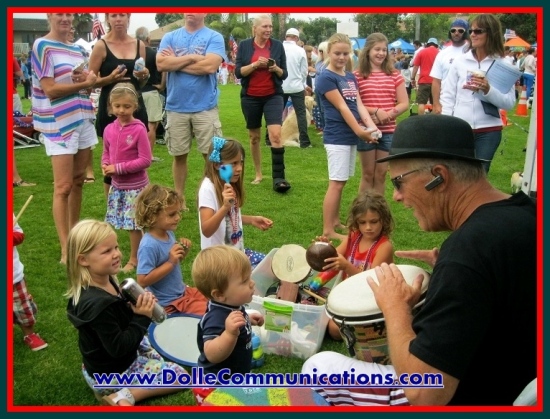
I have been involved in drumming therapy since before I became involved in drumming in 2004. It was my 2002 sound sensory processing study with the Boss metronome which were my orginal efforts in sound patterning. After becoming involved in drumming in 2004, my interests were split between play and research. I authored this first web page on drumming entitled, What is a Drum Circle, which discusses some of the science plus my own views on drumming, or drum circles.
In 2005, I put on my very first drumming for the brain workshop at the High Hopes Head Injury center in Tustin, CA. From there, I began to put on a wide array of drumming for health events, though these were mostly for disorders of the brain and central nervous system. This drumming for wellness page below features some of these efforts.
Drumming for Wellness
Drumming therapy is finding success today in 1:1 and group sessions with ADHD, ADD, autism, hydrocephalus, Parkinson’s Disease, post TBI, aging, and more. What is critical in all of this is that the individual and group ENGAGE!
The information on my above drumming web pages discusss how you can obtain a drumming event, workshop, or therapy session with me.
Dolle Communications – Cognitive Neuroscience

I created the above Cognitive Neuroscience web page to encompass my neurosciences efforts from hydrocephalus to mHealth, sensory processing disorder, drumming, drumming therapy, cognitive accessibility, and related outreach. Like so many sites and pages, it is a work in progress to keep it up to date.
Generally speaking, decibel apps only help you with loudness or decibel level of surrounding sound before it might become problematic for you, your child, or parent. Unfortunately, the triggering aspect of sound, is more in its pattern and pitch than loudness, and is why I undertook this next study in 2002 on sound and sensory processing – to understand the types and effects of sound exposure on persons with hydrocephalus who also have SPD. I feel the types of SPD challenges I evaluated in hydrocephalus is similar to that of autism and other neurological and learning disorders.

Sound Sensory Dysfunction in Brain Injury and Neurological Disorders

As for balance, coordination, fitness, and sensory processing challenges, it doesn’t get much better than shooting baskets – which I began doing therapeutically in 2008. I eventually met up with another shooter, Al Massip, and our on court discussions turned to philosophy and brain science. One day, I posed the question, Where does the Shot come From? And this became a focal point of our shooting for several years, until 2015 when I published this in-depth blog that now attracts 500+ monthly visitors from all over the world. This suggests a lot of people are trying to answer this question. The answer may be in part mystical too. On a therapeutic level, my basketball and drumming with basketball methods are very helpful for a number of neurological disdorders and brain health.
Sports Science vs Brain Science of Basketball: Where does the Shot come From?

My next blog discusses how mobile apps are helpful in managing sensory processing disorder in everyday life, no easy feat. This is a detailed blog with supporting links.
Mobile apps Helpful in Managing Sensory Processing Disorder
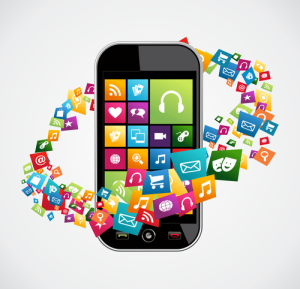
The final supporting presentation below was from my power point as part of a talk I delivered at Wayne State University on drumming and rhythm methods in STEM3 education. I discuss a range of implications from language and learning, to speaking tempo and entrainment of teacher/student, to health and sound sensory processing and classroom noise considerations.
From my 20+ years in living with hydrocephalus, research and writing about the brain, a lifetime of playing music, 17 years in nuclear medicine, and coach on 20 little league soccer and baseball teams, I truly understand how drumming helps others.
Contact me if you are interested in drumming therapy sessions, consults, or having me speak at an event. The best method of contact is via email.
Thank you.
Stephen Dolle
Neuroscientist, mHealth Inventor & Drum Circle Facilitator
Email: contact[at]dollecommunications[dot]com
DolleCommunications.com


[…] Private Drumming Therapy Session w/ Young Girl with Cerebral Palsy & Autism […]
LikeLike
[…] Drumming Therapy Experience in a Child w/ Cerebral Palsy & Autism […]
LikeLike
[…] would like me to speak on my efforts with sensory processing disorder, workplace drumming or therapeutic drumming, please contact me via the information below. Feel free to CLICK and SAVE my contact JPEG […]
LikeLike
[…] Drumming Therapy Case Study in a Child with Cerebral Palsy and Autism […]
LikeLike
[…] Drumming Therapy in Cerebral Palsy and Autism […]
LikeLike
[…] Drumming Case Study in Autism […]
LikeLike
[…] Drumming Case Experience in a Child with Autism & Cerebral Palsy […]
LikeLike
[…] Drumming Therapy experience in Cerebral Palsy and Autism […]
LikeLike